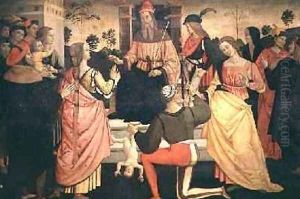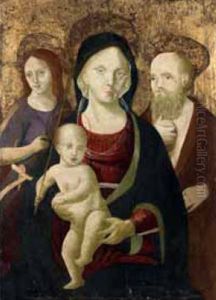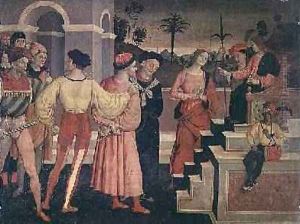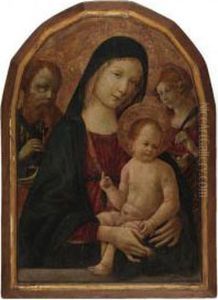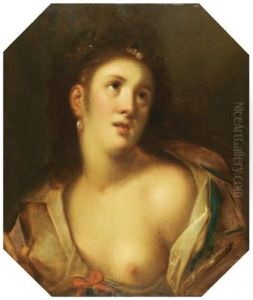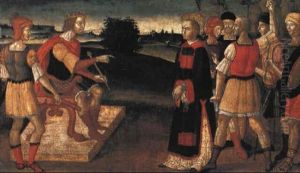Giacomo Pacchiarotti Paintings
Giacomo Pacchiarotti was an Italian painter of the Renaissance, active primarily in his hometown of Siena. Born in 1474, his life and career were deeply intertwined with the artistic and cultural developments of late 15th and early 16th century Italy. Pacchiarotti's work is often associated with the Sienese School, a tradition that, while somewhat overshadowed by the Florentine and Venetian schools, played a crucial role in the development of Renaissance art. His contributions, however, are not as widely recognized as those of contemporaries such as Raphael or Michelangelo, partly due to the regional nature of his practice.
Pacchiarotti's style is marked by the delicate use of color and refined attention to detail, characteristics that align him with the principles of the Sienese School. He was adept in both fresco and panel painting, contributing to the decoration of numerous churches and public buildings in Siena. His works are noted for their elegance and grace, often featuring religious themes that were popular among his contemporaries. Despite his considerable skill, much of Pacchiarotti's life and work remain shrouded in mystery, with only a handful of his paintings firmly attributed to him.
One notable aspect of Pacchiarotti's career was his involvement in the tumultuous political landscape of Siena. Historical records suggest that he was actively engaged in the city's civic life, which at times may have impacted his artistic output and reputation. The exact circumstances of his death are unclear, with most sources indicating that he passed away in 1539 or 1540. Today, while not a household name, Pacchiarotti is appreciated by art historians and connoisseurs for his contributions to the Sienese tradition and the broader tapestry of Renaissance art. His surviving works, though few, continue to be studied for their beauty and historical value, offering insights into the less explored corners of Renaissance artistic production.
